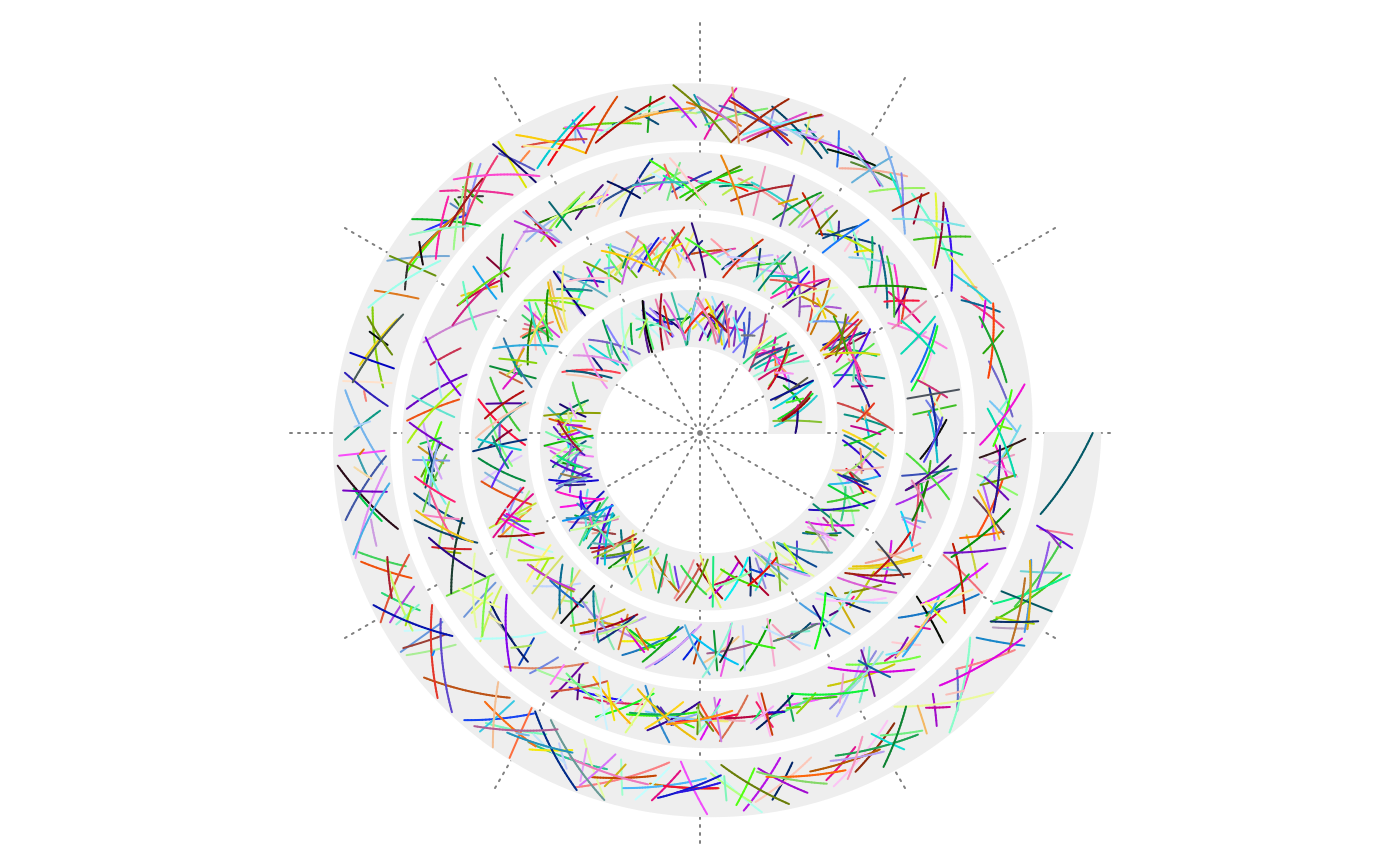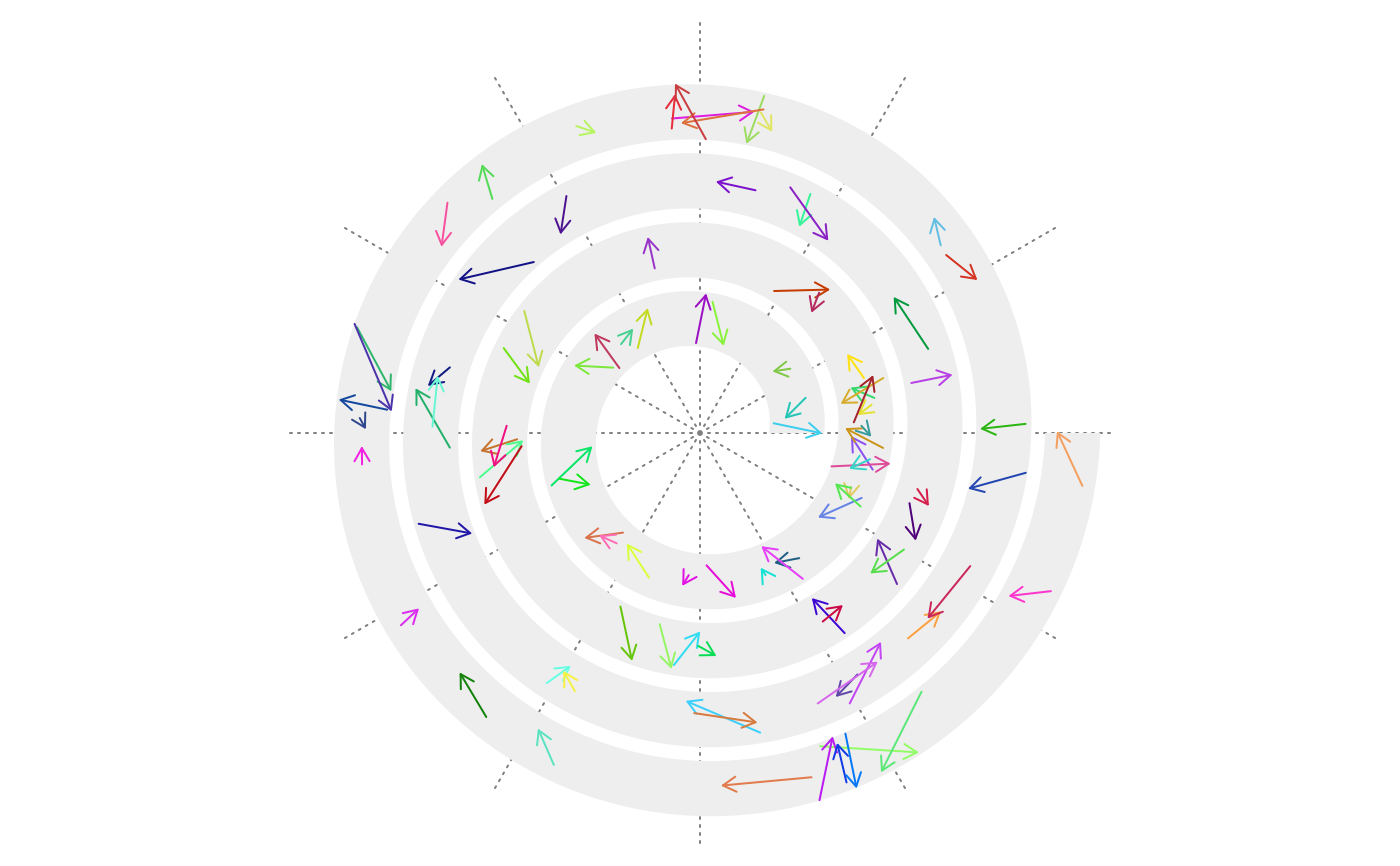Add segments to a track
spiral_segments(
x0,
y0,
x1,
y1,
gp = gpar(),
arrow = NULL,
track_index = current_track_index()
)Arguments
- x0
X-locations of the start points of the segments.
- y0
Y-locations of the start points of the segments.
- x1
X-locations of the end points of the segments.
- y1
Y-locations of the end points of the segments.
- gp
Graphical parameters.
- arrow
A
grid::arrow()object.- track_index
Index of the track.
Value
No value is returned.
Examples
n = 1000
x0 = runif(n)
y0 = runif(n)
x1 = x0 + runif(n, min = -0.01, max = 0.01)
y1 = 1 - y0
spiral_initialize(xlim = range(c(x0, x1)))
spiral_track()
spiral_segments(x0, y0, x1, y1, gp = gpar(col = circlize::rand_color(n)))
 n = 100
x0 = runif(n)
y0 = runif(n)
x1 = x0 + runif(n, min = -0.01, max = 0.01)
y1 = 1 - y0
spiral_initialize(xlim = range(c(x0, x1)))
spiral_track()
col = circlize::rand_color(n, luminosity = "bright")
spiral_segments(x0, y0, x1, y1,
arrow = arrow(length = unit(2, "mm")), gp = gpar(col = col))
n = 100
x0 = runif(n)
y0 = runif(n)
x1 = x0 + runif(n, min = -0.01, max = 0.01)
y1 = 1 - y0
spiral_initialize(xlim = range(c(x0, x1)))
spiral_track()
col = circlize::rand_color(n, luminosity = "bright")
spiral_segments(x0, y0, x1, y1,
arrow = arrow(length = unit(2, "mm")), gp = gpar(col = col))
 # if the segments are short and you want the straight "real" segments
spiral_initialize(xlim = range(c(x0, x1)))
spiral_track()
df0 = xy_to_cartesian(x0, y0)
df1 = xy_to_cartesian(x1, y1)
grid.segments(df0$x, df0$y, df1$x, df1$y, default.units = "native",
arrow = arrow(length = unit(2, "mm")), gp = gpar(col = col))
# if the segments are short and you want the straight "real" segments
spiral_initialize(xlim = range(c(x0, x1)))
spiral_track()
df0 = xy_to_cartesian(x0, y0)
df1 = xy_to_cartesian(x1, y1)
grid.segments(df0$x, df0$y, df1$x, df1$y, default.units = "native",
arrow = arrow(length = unit(2, "mm")), gp = gpar(col = col))
